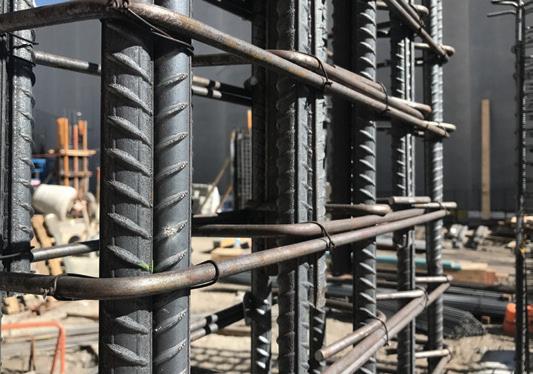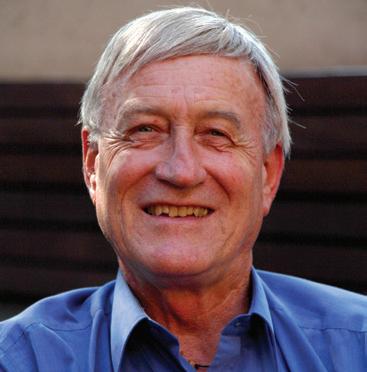
7 minute read
INDUSTRY INSIGHTS
by Peter Newman AO, Professor of Sustainability, Curtin University, Perth
THE NEW INFRASTRUCTURE FOR A NEW ECONOMY
Advertisement
The next economy is emerging rapidly based on new infrastructure that has been ready, but not yet mainstreamed.
Since the 1920s long wave theory economists have analysed the waves of innovation following economic collapse in the past 250 years. Figure 1 shows the past five waves and the potential for innovation in the postCOVID economy.
The innovations in infrastructure outlined in Table 1, along with the suggested emerging innovations that replace the stranded old assets, attract new investment as they cost-effectively solve multiple problems. These include: ♦ Renewable energy, especially solar
PV with batteries ♦ Electro-mobility, especially with non-automobile systems ♦ Smart cities, especially sensors,
Apps and ICT focused on efficient demand management ♦ Hydrogen, especially replacing fossil fuels in heavy industry ♦ Circular economy waste and recycling technologies ♦ Biophilic urbanism bringing nature into buildings and infrastructure
Figure 1. Waves of innovation over the past 250 years that emerge after economic collapse and create the next economy.
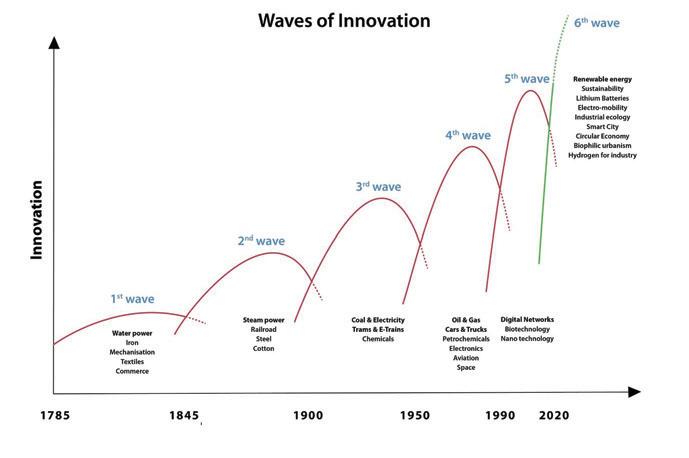
The new wave of infrastructure is an integrated ‘cluster of innovations’ – especially the first three (solar, batteries and electro-mobility) which are rapidly being adopted. These three will be the focus of change over the next decade. POWER: RENEWABLE ENERGY, PV AND BATTERIES
Solar and wind are now the cheapest form of power and are easy to mass produce and implement in most cities and economic systems. Cities will become much more distributed into
THE NEW INFRASTRUCTURE FOR A NEW ECONOMY
local areas of infrastructure management, but they will still fit into a grid for equity and balance.
Shared solar, using batteries and blockchain or other community-based methods, has now been demonstrated for medium and high-density areas, industrial estates, and rural and remote villages.
Electro-mobility will also be a part of grid stabilisation. Gas turbines (and diesel backup in small grids) have been seen as necessary for grid stabilisation but Li-ion batteries are now cost-effective at over 150MW, making them cheaper than gas turbines and more effective at providing a rapid peaking function. 100 per cent renewable power systems will rapidly take over with Australia being a leader. The 2020 AEMO report on the Australian grid shows that it can be 75 per cent renewable by 2025, which will be pushed mostly by rooftop solar.
The COVID downturn is accelerating this transition as shown in Figure 2, as new solar and wind systems have marginal costs near to zero, thus the reductions in demand must be made by fossil fuel-based power.
Economic Waves
1780s to 1840s Industrial revolution
1840s ‘Hard Times’ then Victorian prosperity
1890s Great Depression then Belle Epoque
1930s Great Crash then Keynesian Growth
1980s Dot-Com recession then Knowledge Economy Technological Innovations Emerging
Water power Iron Mechanisation Textiles Commerce
Steam power Railroad Steel Cotton
Electricity Chemicals Internal combustion engine
Petrochemicals Aviation Electronics Space
Digital networks Biotechnology Information technology
Business Model
Small and cottage industries
Cottage industries into large capital firms and factories
Monopolistic Fordist Firms and factories
Multinationals Modernism
Energy and Infrastructure
Water power and horsepower Canals and sailing ship ports Roads for carriages Linking cities
Wood and steam into train systems
Coal and electric tram and train systems
Oil and freeways
Flexible specialisation and networked globalism Superhighway and ICT systems
Transport and City Form
Walking cities rapidly densifying from industry
Walking cities into rail-based linear urban development
Tram and train-based corridors
Automobile-based urban sprawl
Revival of urban centres around knowledge economy
2020s COVID Collapse then Green Economy
Renewable energy Circular economy Smart city Global localisation Renewables with batteries Electro-mobility, especially non-carbased Smart cities Hydrogen for industry Circular economy Biophilic urbanism Re-localised centres Smart, distributed infrastructure Transit activated corridors fed by micro-mobility AV’s and active transport
Accelerated adoption of renewables has been seen across all 41 nations in the OECD where IEA data showed that in March 2020, compared to the previous year, electricity fell by 3.6 per cent but coal fell by 21.6 per cent, as solar grew 15.6 per cent, wind by four per cent and gas by a mere 2.7 per cent (and that was almost all in North America).
This is a classic example of how exponential growth in renewables and batteries can be expected to take over power grids in the near post-COVID infrastructure future.
TRANSPORT: ELECTRO-MOBILITY, MICRO-MOBILITY, TRANSIT, WALKABILITY AND ACTIVE TRANSPORT
Electro-mobility has had a growth rate of over 40 per cent per year in the past decade, with predictions for how quickly the internal combustion engine will be phased out of new vehicles now coming down into the 2020s.
Electric vehicles are rapidly reducing in cost, with battery packs reduced from $1000/kWh in 2010 to less than $200/ kWh in 2020. EVs are also preferred for other social and environmental reasons such as cleaning up local air pollution, particularly since it was discovered that COVID is carried on diesel particulates.
Figure 2. The discontinuity already being seen in power consumption in the US. Image source: IEA.
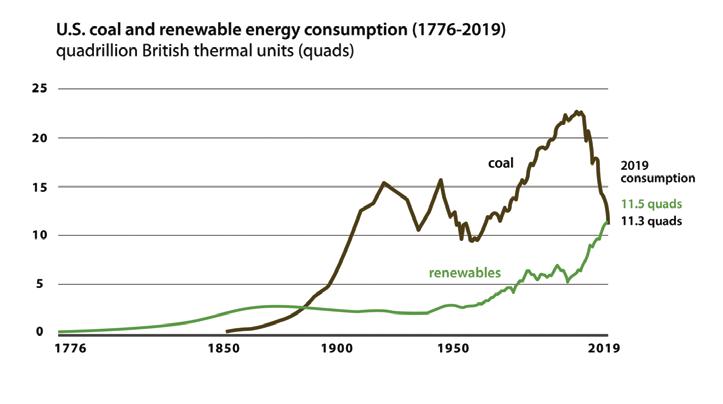
Micro-mobility – electric tuk tuks, electric bikes, electric scooters and electric skateboards – is becoming a major part of the EV revolution. Electric micro-mobility will be a growing focus for the new economy, so cities will need to make space for them on shared paths.
The co-benefits of active transport are very high and include local economic development. Enabling local centres to work without cars and to enable transit systems to work without the need for car-dependent corridors has been
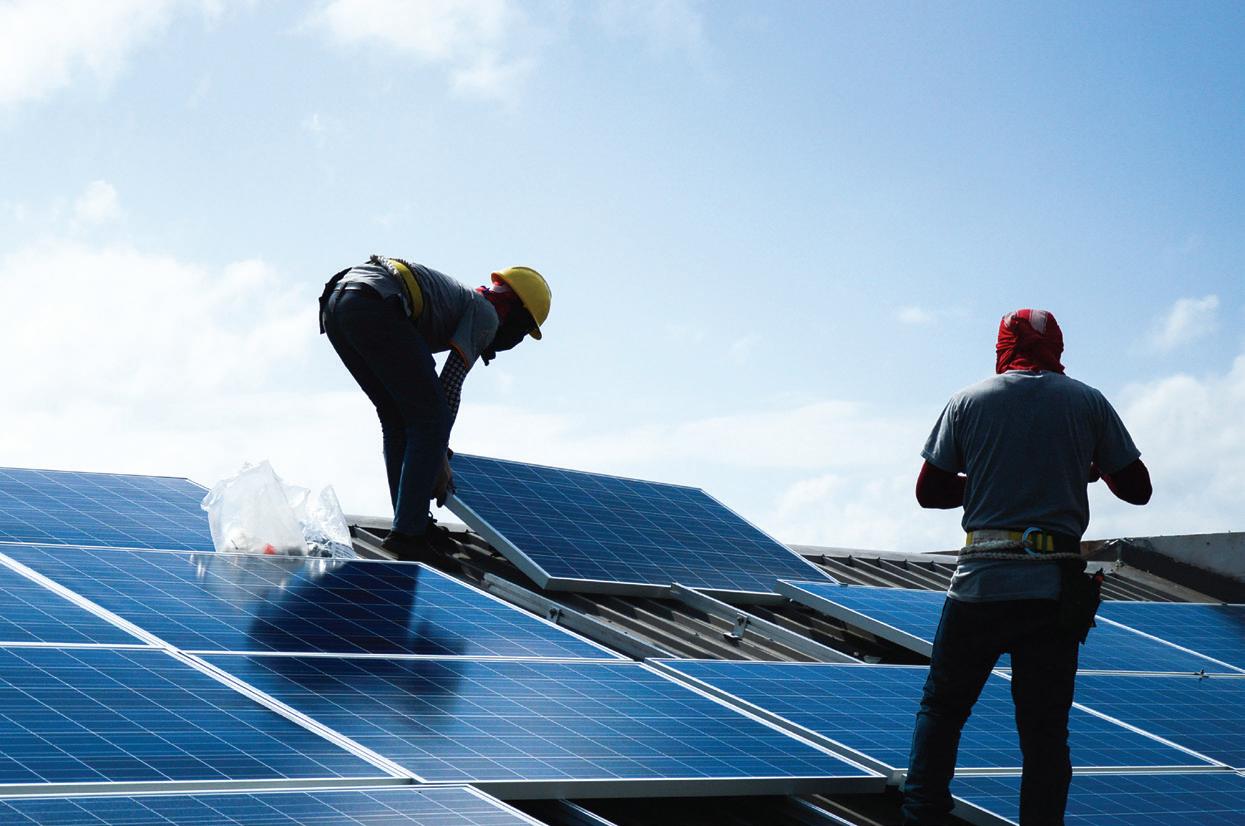
emerging over the past decades. Transit was seriously damaged during COVID, but so was car traffic, thus the growth of local walkability and active transport has been a global phenomenon, with many cities building this into permanent change.
A significant innovation in electromobility in terms of common-good outcomes is the electrification of public transport. The electrification of heavy train and tram systems is a mature technology but new Li-ion batteries have revolutionised the electrification
of buses into electric BRTs or Trackless Trams. These are now able to fit into cities by enabling whole main road corridors to be developed with dense precincts around stations due to their quiet, pollution-free accessibility. Such systems can replace the equivalent of six lanes of traffic.
All forms of electro-mobility need recharging, and in cities these can become part of Recharge Hubs to support grid balance. Power utilities will pay for these grid services as cities move to electrify their bus fleets (e.g. Shenzen and Canberra). Depots and stations covered in PV and with batteries inside can become important mini power/substations.
SMART CITIES-BASED DEMAND MANAGEMENT
Smart cities infrastructure works best in facilitating re-localised centres with reduced resource consumption. Localised infrastructure using machine learning can use sensors to manage local energy, water, waste and transport infrastructure, like a set of neural networks that are
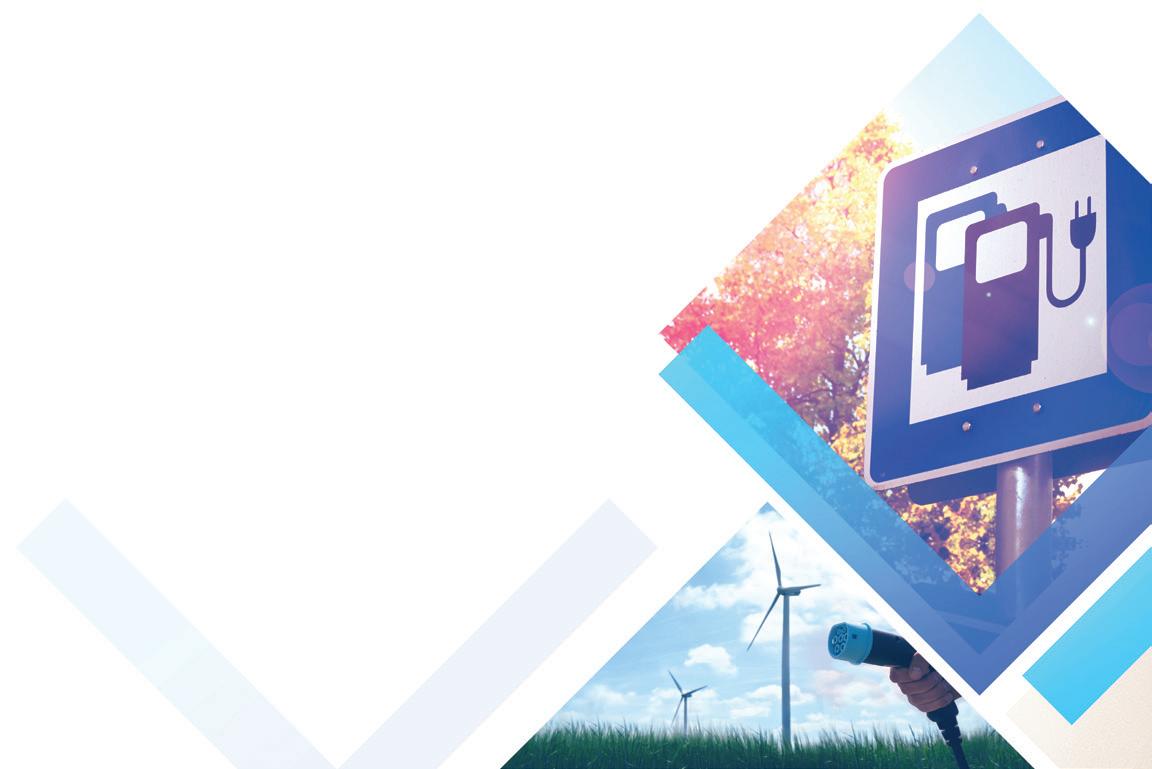
constantly improving the ecosystem in which they operate. The local precincts set up with such simple technology will be highly efficient and can be optimised to share equitably and enable job creation through enterprise facilitation in local communities.
The hydrogen story is best left in Ross Garnaut’s hands. He suggests that Australia can become a superpower by applying solar-based hydrogen in northern regions to refine minerals. Hydrogen, the new circular economy and biophilic innovations are not going to go mainstream as quickly as solar, batteries and smart city infrastructure. These three are likely to at least continue to grow in niche demonstrations as part of the cluster of innovations for infrastructure in the next economy.
But solar, batteries and EVs will dominate the infrastructure of the next economy.
The Segnut system is a world-first, proprietary technology that delivers unprecedented value through safer work practices and better utilisation of time and labour.



FORGING THE FUTURE IN FASTENING SYSTEMS
SAFER
100% elimination of hot works practices.
FASTER
Reduces nut removal time by up to 95%.
SMARTER







